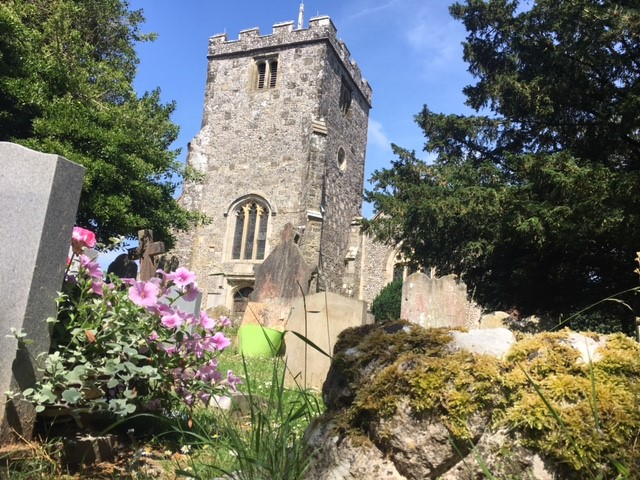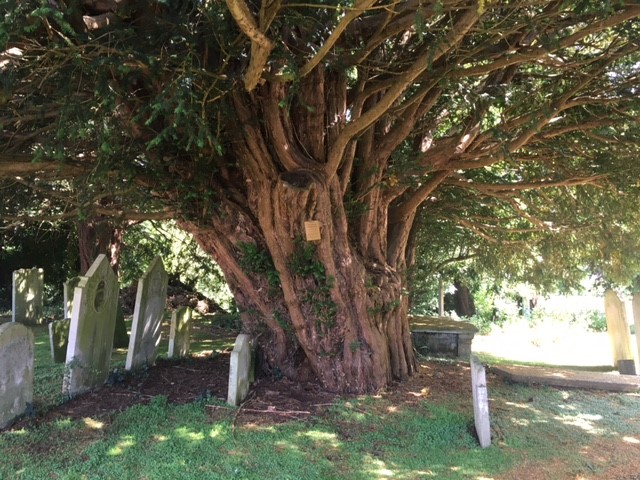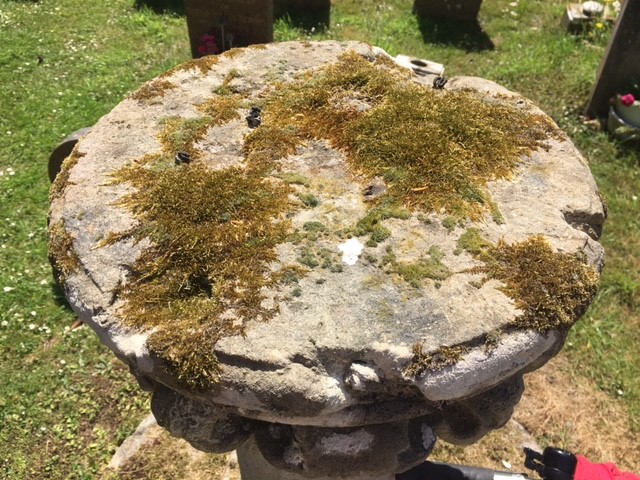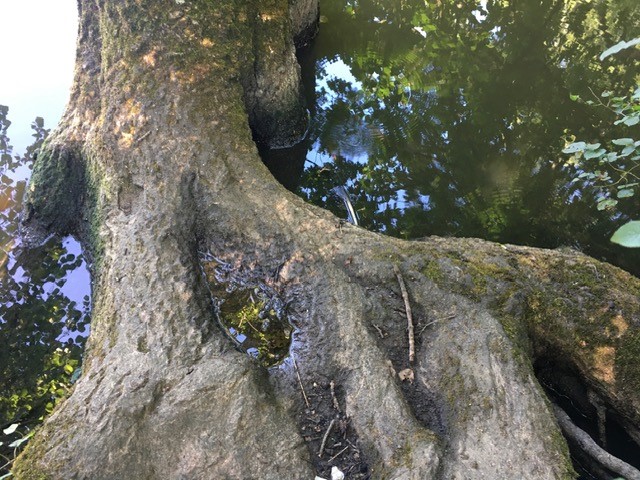The oldest and largest Yew in Arun shades the entrance to the graveyard of St. Margaret’s Church in Angmering, welcome after a cycle in midday sun from the train station.

The Yew was planted before 1509 and shades a large area of path and graveyard. Nothing much grows under Yew, (isn’t that a Prince song?), but there was a thin line of Syntrichia montana along cracks in the tarmac. There were no cobbles or wonky brick to add a variety of bryophyte habitats.

The church is unusual in that its longest walls face east and west, meaning a shorter length of shady bryophyte habitat. Rhynchostegiella tenella ran in a furry coat along the base of the north wall and the bottom of some gravestones. Calliergonella cuspidata grew on the steep turf bank behind the church along with Rhytidiadelphus squarrosus.
Gravestones were largely bare of bryophytes and I had almost circled the church before finding curls of Homalothecium sericeum on low tombstones. Nearby, one grave was covered in ochre, straight shoots of Homalothecium lutescens growing with Stonecrop. These two mosses are easier to tell apart by their appearance in the field and by their substrate than by their microscopic features which are remarkably similar, so any uncertainty in the field continues at home!
Along the way there was Didymodon luridus on a cobbled grave and lots of fruiting Ceratodon purpureus on a gravel grave. I’m still puzzling over some possible Scleropodium cespitans from another tombstone.
Another moss that needs confirming is possible Grimmia trichophylla, growing with Grimmia pulvinata on the top of a mushroom shaped ornament. It is more of a lime green compared to the bluish tones of G. pulvinata, doesn’t have capsules and the microscopic features seem right.

There was loads of Didynodon nicholsonii on shaded tarmac along Church Lane, then I cycled along the wrong road up to Dappers Lane where a roadside ditch added Fissidens bryoides, Lunularia cruciata and Pohlia melanodon.
Back in the village centre one Lime tree in the village square was covered in masses of Syntrichia laevipila, the other four Limes were bare.
A large recreation ground needed to be crossed to get to a footpath leading towards Steyne Wood. Just two liverworts, a tiny scrap of Myriocoleopsis minutissima and Frullania dilatata on Oak were found here.
Then a cycle along the edge of a large field of Maize on a bike completely unsuited to the terrain. The joy of huge open spaces and big sky was slightly dampened by pessimistic thoughts that these fields could go the way of so many other areas of flat land around here, and this footpath may become a fenced off alley between new housing.
The wood was wet with large ponds and soggy bits and just one area fairly easy to access. A large Willow leaning over a muddy area, which would be underwater during winter, was covered in a green coat of Conocephalum conicum, Metzgeria violaceae and Amblystegium serpens. Rhizomnium punctata, Lophocolea bidentata and Leptodictyum riparium grew on dead wood in the mud and Pulvigera lyellii and Cryphaea heteromalla grew higher up on another Willow.
It wasn’t a huge woodland haul but TQ00S now has 49 bryophytes recorded from a start of just 2. There are a couple of mosses still to confirm.
It wasn’t far to the next tetrad and another short path between Decoy Wood and a lake. I could see a nice old bank of Mnium hornum through the mesh of old and new barbed wire, safe to record this from a distance but anything else growing with it was out of eyes reach. The dreary maize field was planted right to its edge and nothing grew between the young shoots.
The path dropped past some Oak trees covered in Hypnum resupinatum to the outfall of a large lake. The concrete gulley was softened with Didymodon sinuosus and Streblotrichum convolutum var. convolutum.
Balancing on roots I could just reach a Field Maple reaching over the pond. Radula complanata and Neckera complanata stretched up the trunk and Fissidens bryoides grew on the earth bank beneath. Further along an Ash with a tangle of roots clinging to the bank had Zygodon conoideus and Pulvigera lyellii with more Didymodon sinuosus on the roots.

At the end of the woodland stretch the footpath continued over undulating rushy meadows and wheat fields, beckoning for another time.

TQ00M now has 24 species recorded, again from a start of 2.

Pingback: Poling Trails | Sussex Bryophytes